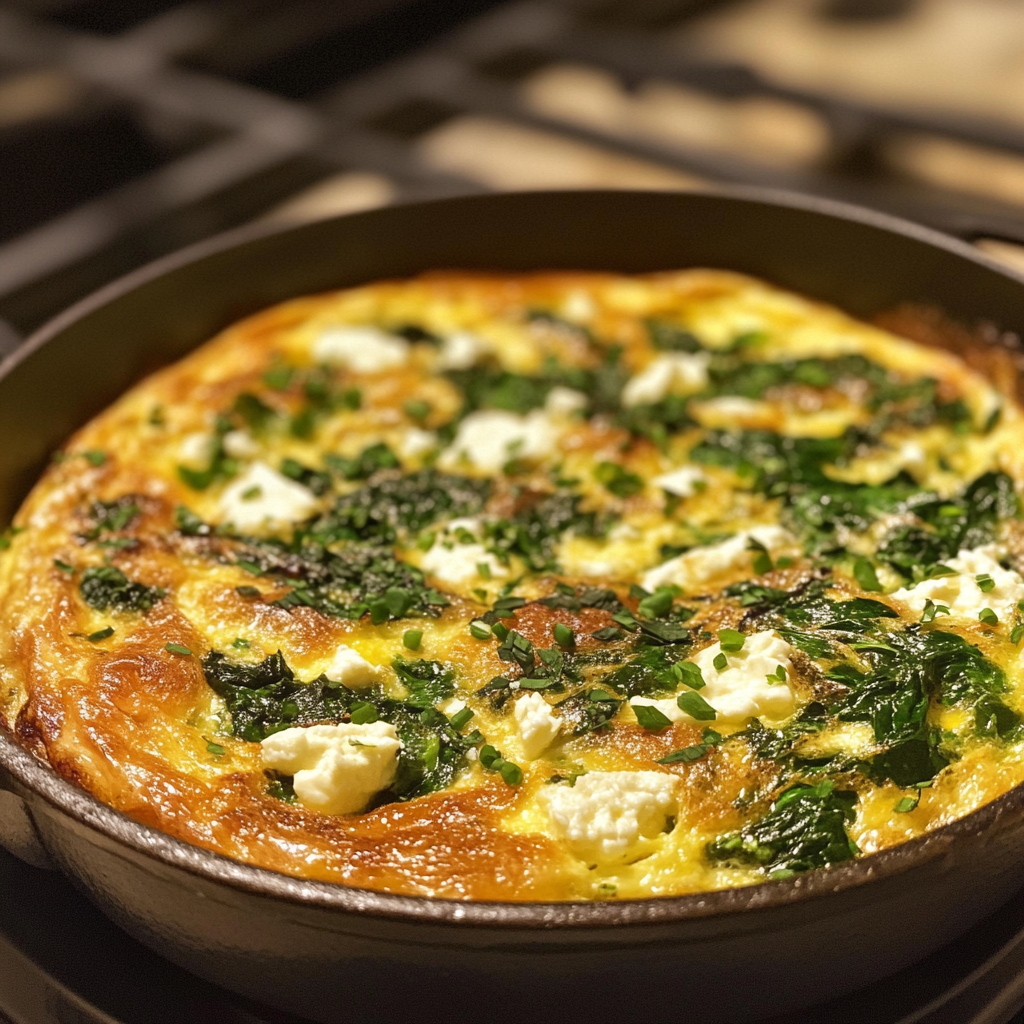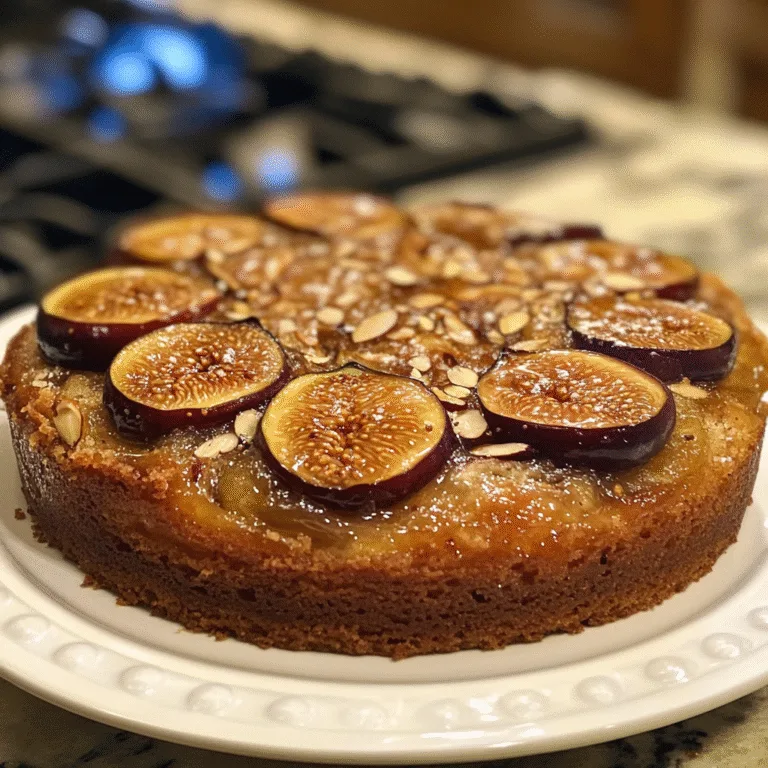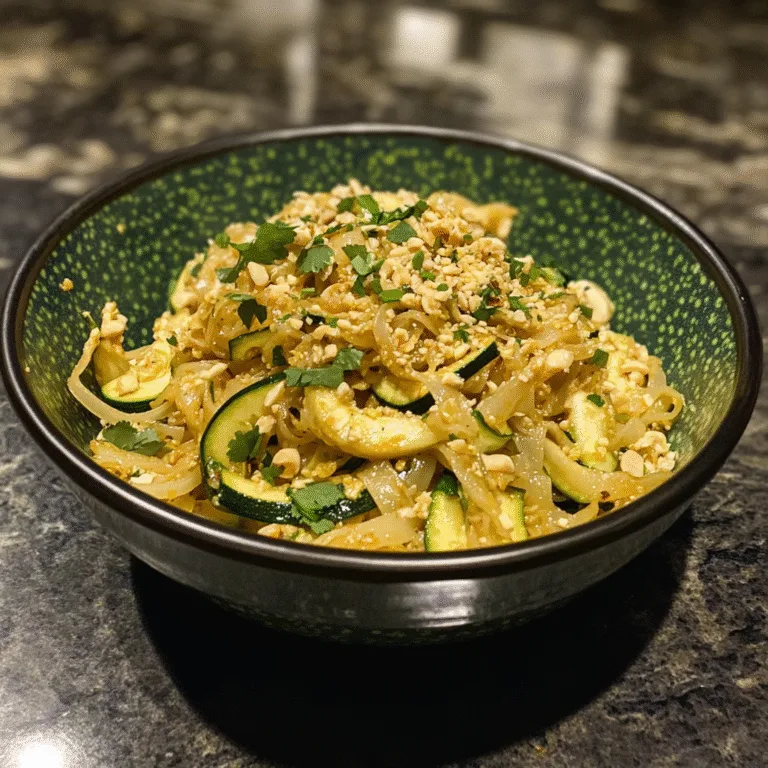Follow Me On Social Media!
Spinach Feta Frittata
Introduction
Did you know that 65% of home cooks avoid making frittatas because they think they're too complicated, yet a Spinach Feta Frittata is actually one of the simplest and most versatile egg dishes you can master? This Mediterranean-inspired dish combines the earthy richness of spinach with the tangy saltiness of feta cheese, creating a protein-packed meal that's perfect for breakfast, brunch, lunch, or even dinner.
Whether you're hosting a weekend brunch or looking for a quick weeknight dinner solution, this Spinach Feta Frittata delivers exceptional flavor with minimal effort. Unlike scrambled eggs that require constant attention, frittatas are largely hands-off once they hit the oven, making them ideal for busy home cooks. Plus, with over 20 grams of protein per serving and a wealth of vitamins from fresh spinach, this dish proves that healthy eating doesn't have to sacrifice taste.
The beauty of a frittata lies in its flexibility – you can customize it with whatever vegetables you have on hand, serve it hot or at room temperature, and it keeps beautifully for meal prep throughout the week.

Ingredients List
For the Perfect Spinach Feta Frittata (Serves 6-8):
- 8 large eggs (room temperature for best texture) – Substitute: 2 cups egg whites for lower cholesterol
- 5 oz fresh baby spinach (or 1 cup frozen, thawed and drained) – Substitute: arugula, kale, or Swiss chard
- 4 oz feta cheese, crumbled (about ¾ cup) – Substitute: goat cheese, ricotta, or dairy-free feta
- ½ medium yellow onion, diced (about ¾ cup) – Substitute: shallots or green onions
- 3 cloves garlic, minced – Substitute: 1 teaspoon garlic powder
- ¼ cup whole milk or heavy cream – Substitute: unsweetened almond milk for dairy-free
- 2 tablespoons extra virgin olive oil – Substitute: avocado oil or butter
- 2 tablespoons fresh dill, chopped (or 2 teaspoons dried) – Substitute: fresh parsley or chives
- ½ teaspoon kosher salt (adjust to taste)
- ¼ teaspoon freshly ground black pepper
- ¼ teaspoon red pepper flakes (optional, for heat)
- 2 tablespoons grated Parmesan cheese (for topping)
Essential Equipment: 10-inch oven-safe skillet (cast iron or non-stick), whisk, mixing bowl
Timing
Preparation Time: 15 minutes
Cooking Time: 25 minutes (10 minutes stovetop + 15 minutes oven)
Total Time: 40 minutes
Compared to the average frittata recipe that takes 45-60 minutes, this streamlined approach saves you valuable time while delivering restaurant-quality results.
Step-by-Step Instructions
Step 1: Prepare Your Oven and Equipment
Preheat your oven to 375°F (190°C). Position the rack in the upper third of your oven for optimal browning. Heat your 10-inch oven-safe skillet over medium heat – cast iron works exceptionally well for even heat distribution and creates a beautiful golden bottom crust.
Pro Tip: If you don't have an oven-safe skillet, you can transfer the mixture to a greased 9-inch pie dish after cooking the vegetables.
Step 2: Sauté the Aromatics
Add olive oil to your heated skillet and swirl to coat. Add the diced onion and cook for 3-4 minutes until translucent and fragrant. The onions should be soft but not browned. Add minced garlic and cook for another 30 seconds until aromatic – be careful not to let it burn.
Chef's Secret: Cooking the onions properly is crucial for flavor development. They should release their moisture and become sweet before adding other ingredients.
Step 3: Wilt the Spinach
Add fresh spinach to the skillet in batches, allowing each addition to wilt before adding more. This process takes about 2-3 minutes total. If using frozen spinach, make sure it's thoroughly thawed and squeezed dry to remove excess moisture, then simply heat through for 1 minute.
Important Note: Excess moisture is the enemy of a good frittata. Always squeeze frozen spinach dry, and let fresh spinach wilt completely.
Step 4: Prepare the Egg Mixture
While the vegetables cool slightly, whisk eggs vigorously in a large bowl until well combined. Add milk, salt, pepper, red pepper flakes, and fresh dill. Whisk until the mixture is smooth and slightly frothy – this incorporates air for a lighter texture.
Technique Tip: Room temperature eggs whisk more easily and create a more uniform mixture than cold eggs straight from the refrigerator.
Step 5: Combine and Add Cheese
Gently fold the crumbled feta cheese into the egg mixture, reserving about 2 tablespoons for topping. The feta will distribute more evenly when mixed with the eggs rather than added to the hot pan.
Step 6: Create Your Frittata Base
Pour the egg and cheese mixture over the cooked vegetables in the skillet. Use a spatula to gently distribute the vegetables evenly. Let the mixture cook undisturbed on the stovetop for 3-4 minutes until the edges begin to set.
Visual Cue: The bottom should be lightly golden when you gently lift an edge with a spatula.
Step 7: Finish in the Oven
Sprinkle the reserved feta and Parmesan cheese over the top. Transfer the skillet to your preheated oven and bake for 12-15 minutes until the center is set and the top is lightly golden.
Doneness Test: The frittata is ready when a knife inserted in the center comes out clean and the top springs back lightly when touched.
Step 8: Rest and Serve
Remove from oven and let the Spinach Feta Frittata rest in the pan for 5 minutes before slicing. This resting period allows the eggs to finish cooking gently and makes slicing cleaner.
Nutritional Information
Per Serving (1/6 of frittata):
- Calories: 185
- Protein: 14g
- Carbohydrates: 4g
- Fat: 13g
- Fiber: 1.5g
- Sugar: 3g
- Sodium: 380mg
- Calcium: 180mg (18% DV)
- Iron: 2.5mg (14% DV)
Health Benefits: Spinach provides exceptional amounts of vitamin K, folate, and iron, while eggs deliver complete proteins containing all essential amino acids. The combination supports bone health, energy metabolism, and muscle maintenance.
Healthier Alternatives for the Recipe
Lower Calorie Version: Replace 4 whole eggs with 8 egg whites and use part-skim ricotta instead of feta cheese. This reduces calories by approximately 40% while maintaining protein content.
Dairy-Free Spinach Frittata: Substitute coconut milk for dairy milk and use nutritional yeast or dairy-free feta alternative. Add extra herbs for flavor depth.
Keto-Friendly Option: Increase the fat content by using heavy cream instead of milk and adding 2 tablespoons of cream cheese to the egg mixture.
Vegan Alternative: Use chickpea flour (1 cup) mixed with 1¼ cups water, nutritional yeast, and turmeric for color. The cooking method remains the same.
Serving Suggestions
Serve your Spinach Feta Frittata alongside crusty sourdough bread or warm pita triangles for a complete Mediterranean experience. A simple arugula salad dressed with lemon vinaigrette complements the rich eggs beautifully.
For beverages, consider freshly squeezed orange juice, Greek coffee, or a light Pinot Grigio for evening service. Fresh herb garnishes like additional dill or chopped chives add visual appeal and aromatic freshness.
Brunch Pairing Ideas: Serve with roasted cherry tomatoes, avocado slices, or a dollop of Greek yogurt mixed with herbs.
Common Mistakes to Avoid
Overcooking the Eggs: The most frequent error is leaving the frittata in the oven too long, resulting in a rubbery texture. Remove it when the center is just set – it will continue cooking from residual heat.
Too Much Moisture: Failing to properly drain spinach or vegetables creates a watery frittata. Always squeeze frozen spinach thoroughly and let fresh vegetables release their moisture during sautéing.
Wrong Pan Size: Using a pan that's too large creates a thin frittata that cooks too quickly, while a too-small pan results in uneven cooking. A 10-inch skillet is ideal for this recipe.
Inadequate Seasoning: Eggs need proper seasoning to shine. Taste your egg mixture before cooking and adjust salt and pepper accordingly.
Storing Tips
Refrigeration: Store leftover Spinach Feta Frittata covered in the refrigerator for up to 4 days. The flavors actually improve after the first day as they meld together.
Freezing: Cut into individual portions and wrap tightly in plastic wrap, then place in freezer bags. Frozen frittata keeps for up to 3 months.
Reheating Methods: For best results, reheat in a 350°F oven for 10-12 minutes until warmed through. Microwave reheating works for convenience (30-45 seconds per slice) but may affect texture. Room temperature serving is also delicious for picnics or lunch boxes.
Make-Ahead Strategy: Prepare the vegetable mixture the night before and store covered. In the morning, simply reheat the vegetables, add to your skillet, and proceed with the egg mixture.
Conclusion
This Spinach Feta Frittata proves that impressive, restaurant-quality meals don't require complicated techniques or exotic ingredients. With its perfect balance of creamy eggs, nutrient-rich spinach, and tangy feta cheese, it's a versatile dish that adapts to any meal and dietary preference.
The beauty of mastering this recipe lies in its flexibility – once you understand the basic technique, you can experiment with different vegetables, cheeses, and herbs to create your own signature variations. Whether you're feeding a family, entertaining guests, or meal-prepping for the week, this frittata delivers consistent, delicious results every time.
Ready to transform your egg game? Grab your skillet and give this Spinach Feta Frittata a try this weekend. Don't forget to share your creations on social media – we'd love to see your personal touches and variations!
FAQs
Can I make this Spinach Feta Frittata ahead of time?
Absolutely! You can prepare the entire frittata up to 2 days in advance. Store it covered in the refrigerator and serve at room temperature or reheat gently in the oven. It's perfect for meal prep or entertaining.
What's the difference between a frittata and a quiche?
A frittata is crustless and starts cooking on the stovetop before finishing in the oven, while quiche has a pastry crust and is baked entirely in the oven. Frittatas typically have a higher egg-to-filling ratio, making them more protein-dense.
Can I use frozen spinach instead of fresh?
Yes, but use only ¾ cup of frozen spinach (about 5 oz package) and make sure to thaw it completely and squeeze out all excess water. Too much moisture will make your frittata watery and prevent proper setting.
How do I know when my frittata is fully cooked?
The center should be set but still slightly jiggly when you gently shake the pan. A knife inserted in the center should come out clean, and the top should be lightly golden. Remember, it continues cooking from residual heat even after removing from the oven.












